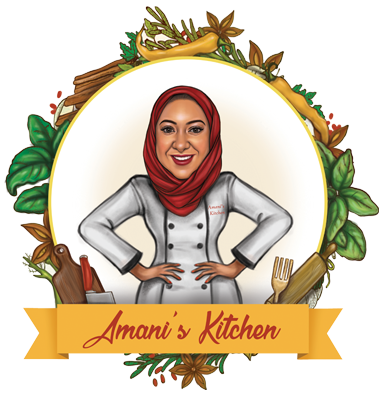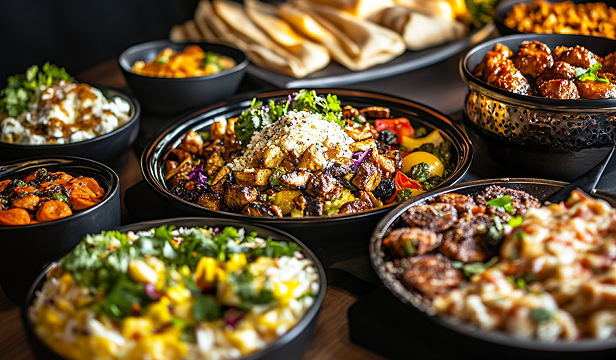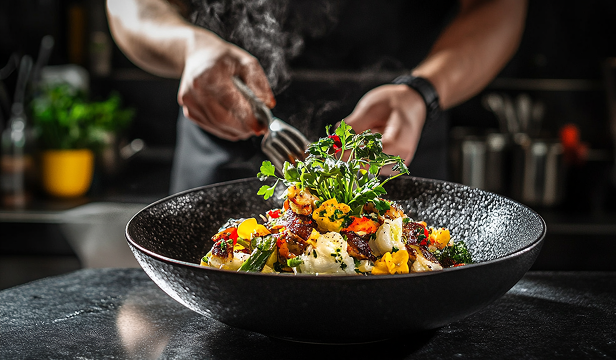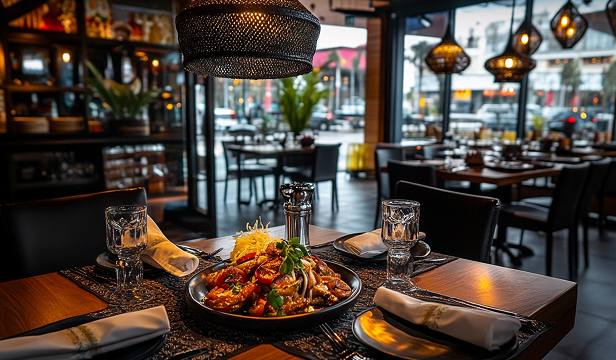Introduction Middle Eastern art is renowned for its intricate patterns, rich colours, and deep cultural…
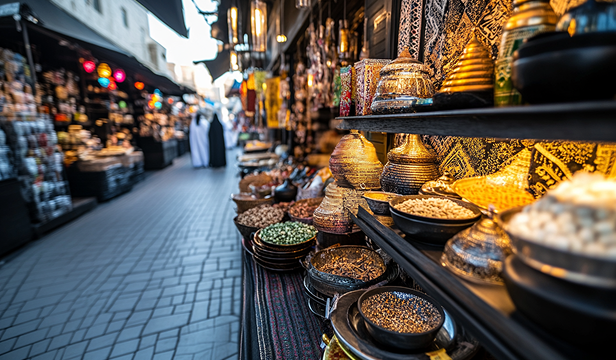
The Role of Art in Traditional Middle Eastern Markets
Introduction
Traditional Middle Eastern markets, known as souks or bazaars, have long been vibrant cultural hubs where art, craftsmanship, and commerce intertwine. These markets are not just places for trade but are also living galleries showcasing centuries-old artistic traditions. From intricate calligraphy to elaborate textile patterns, art plays a fundamental role in shaping the atmosphere and identity of these bustling marketplaces.
Architectural Aesthetics and Market Design
The very structure of Middle Eastern markets reflects the artistic heritage of the region. Many souks are adorned with:
- Ornate Archways and Geometric Patterns: Inspired by Islamic art, these elements create visually stunning entrances and walkways.
- Hand-Carved Wooden Doors: Featuring intricate floral and arabesque motifs, these doors add to the historic charm of the markets.
- Tilework and Mosaic Flooring: Often found in Persian and Moroccan markets, these vibrant designs elevate the ambiance and create a sense of cultural richness.
Calligraphy and Signage in Markets
Arabic calligraphy is an essential artistic element within Middle Eastern markets. It appears in various forms, including:
- Handwritten Shop Signs: Many market stalls feature beautifully crafted signs displaying store names in elegant script.
- Decorative Wall Inscriptions: Verses from poetry, proverbs, or Quranic text are often found adorning the interiors and exteriors of market stalls.
- Packaging and Branding: Traditional products such as spices, perfumes, and handcrafted goods often feature exquisite calligraphy, reinforcing authenticity and artistic tradition.
Textiles and Handwoven Artistry
Middle Eastern markets are renowned for their textiles, which serve as both functional goods and artistic expressions:
- Persian Carpets and Kilims: These woven masterpieces tell stories through patterns, colours, and symbolism.
- Hand-Embroidered Garments: Traditional clothing such as kaftans and abayas often feature gold thread embroidery and beadwork.
- Silk and Wool Scarves: Dyed using natural pigments, these fabrics showcase techniques that have been passed down through generations.
Pottery, Ceramics, and Decorative Art
Handcrafted pottery and ceramics play a significant role in the artistic landscape of Middle Eastern markets:
- Hand-Painted Tiles: Featuring floral and geometric motifs, these tiles are often sold as souvenirs or used in home décor.
- Traditional Earthenware: Clay pots and vessels, adorned with symbolic patterns, remain popular for both practical and decorative purposes.
- Iznik and Persian Ceramics: Characterised by their striking blue and turquoise glazes, these pieces reflect centuries of artistic refinement.
Jewellery and Metalwork
Middle Eastern metalwork is another artistic highlight of traditional markets:
- Filigree Silver and Gold Jewellery: Delicate metal designs, often incorporating gemstones, showcase the region’s rich jewellery-making tradition.
- Brass and Copper Lanterns: These intricately designed lighting fixtures cast mesmerizing shadows, adding to the visual allure of the markets.
- Hand-Engraved Daggers and Swords: Often displayed as collectible items, these weapons carry both artistic and historical significance.
Street Art and Live Performances
Markets also serve as platforms for contemporary artistic expressions:
- Live Calligraphy Demonstrations: Artists create personalised calligraphy pieces for visitors.
- Henna Artists: Offering intricate designs, henna artists keep this traditional body art alive.
- Musicians and Storytellers: Many markets feature live performances of folk music, poetry readings, and traditional storytelling.
Modern Influences and Adaptations
As Middle Eastern markets evolve, contemporary artists and designers are finding ways to merge traditional artistry with modern aesthetics. Some markets now feature:
- Fusion of Traditional and Contemporary Art: Local artists incorporate modern styles into classic Middle Eastern motifs.
- Artisan Collaborations: Handmade goods created by emerging artists blend heritage techniques with innovative designs.
- Digital Art and Signage: Modern calligraphy and graphic design bring a fresh look to traditional market aesthetics.
Conclusion
Art is an inseparable part of Middle Eastern markets, enriching the shopping experience and preserving cultural identity. Whether through architecture, textiles, ceramics, jewellery, or live performances, the artistic essence of these markets continues to captivate visitors and locals alike. The fusion of commerce and creativity ensures that traditional Middle Eastern markets remain not just places of trade but also centres of artistic and cultural celebration. With modern influences shaping new artistic expressions, these markets continue to evolve while honouring their rich heritage.
